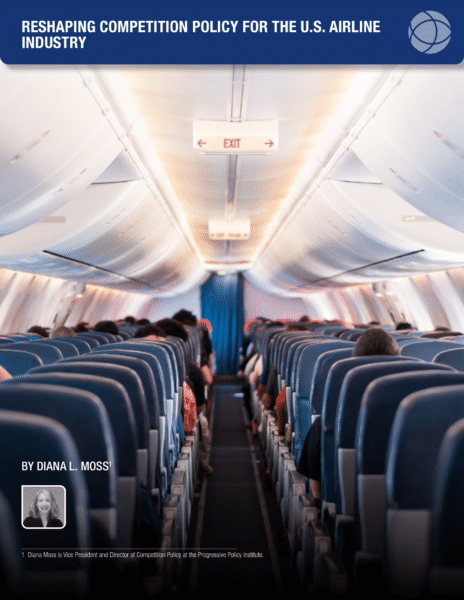FACT: Trump tariffs have nothing at all to do with ‘reciprocity.’
THE NUMBERS:
| Trump tariff on anything from Lesotho: |
50.0% |
| Current U.S. tariff on Lesotho goods: |
0.0% |
WHAT THEY MEAN:
A small landlocked country of 2.2 million in southern Africa, Lesotho’s modest shipments of clothing – $230 million worth last year — accounts for 0.007% of American imports. The Trump administration has singled this out for a 50% tariff, the highest rate anywhere in the world. Should it stay on, the tariff will likely cripple Lesotho’s economy and immiserate the 12,900 young women at work stitching shirts and blue jeans around Maseru this afternoon. Much the same will happen in Cambodia, Madagascar, Pakistan, Bangladesh, Vanuatu, Sri Lanka, and dozens of other low-income countries.
How did this happen? Background, and a look at the likely effects.
Having spent the last three months claiming that Americans are victims, immiserated, plundered, etc., by “unfair” trade barriers in foreign countries and arguing for “reciprocal” tariffs, the Trump administration seems to have decided in March that calculating “reciprocity” was too hard. The tariffs Mr. Trump imposed by decree last Wednesday – in effect as of this morning – have nothing at all to do with foreign tariffs on American goods. Instead, the administration did two quite different things:
(1) Gave every country in the world a 10% tariff. (For those interested in reciprocity, a flawed but not wholly useless concept, the average world tariff is probably a bit above 3%.) This appears to be added to, rather than replacing, the existing 2.4% average. Based on records kept by the U.S. International Trade Commission, the resulting ~12.4% tariff rate would be the U.S.’ highest since the Depression of the 1930s.
(2) Created a second set of tariff rates for 57 countries (counting the 27-member European Union as a single economy) with which the U.S. ran a “goods trade deficit’” in 2024. I.e., Americans bought more from the relevant place than we sold to people there. (Russia, a -$2.5 billion deficit country last year, gets an exemption.) As practical examples, this means surtaxes of 20% on Dutch cheese and semiconductor manufacturing equipment, 26% on Korean cars and computers, 48% on Cambodian shirts, 28% on Tunisian dates and jewelry, and so on.
Where do these numbers come from? The administration appears to have gotten them not by looking up tariff rates abroad – though they’re easy to find – but from a four-column spreadsheet based on an arithmetical formula. One column has the dollar value of American exports (excluding services trade, so Hollywood film revenue, telemedicine, foreign-student tuition, tech-sector search and data analytics, financial services, architecture and engineering contracts, etc., count as nothing). The second column has the value of goods-only trade deficits, or “exports minus imports.” The third column calculates a “trade balance to imports” ratio, and the fourth divides this ratio by two to get a supposed ‘reciprocal’ tariff.
Here’s a real-world case: The Falkland Islands – a British South Atlantic territory home to 3,162 people – gets hit with a 42% tariff. They sold Americans $22.8 million worth of toothfish and squid last year (fisheries are 40% of the Falklands economy) while buying $4.1 million worth of American airplane parts, ceiling fans, and computer accessories. The administration gets its 42% ‘reciprocal tariff’ on Falklands goods from the following formula:
{(fish – airplane parts)/fish}/2.
Spelling it out, fish minus airplane parts equals $18.7 million. Divided by fish ($22.8 million), this yields a ratio of “0.84.” Division of this by two then produces the 42% “reciprocal” tariff. Obviously this has nothing to do with Falkland Islands tariffs, nor America’s either. Neither does it get more logical results anywhere else. Some examples, placing the Trump tariff against the actual trade-weighted average tariff rates published in the WTO’s World Tariff Profiles 2024:
| Trump tariff on Bosnian goods: |
36.0% |
| Bosnian average trade-weighted tariff: |
6.2% |
|
|
| Trump tariff on Brazilian goods: |
10.0% |
| Brazil average trade-weighted tariff: |
6.7% |
|
|
| Trump tariff on Jordanian goods: |
20.0% |
| Jordan tariff on U.S. goods (FTA partner) |
0.0% |
|
|
| Trump tariff on Madagascar goods: |
47.0% |
| Madagascar average trade-weighted tariff: |
8.7% |
|
|
| Trump tariff on UK goods |
10.0% |
| UK average trade-weighted tariffs: |
2.3% |
|
|
| Trump tariff on Vietnamese goods: |
46.0% |
| Vietnamese average trade-weighted tariff: |
4.5% |
This sort of fecklessness has drawn appropriate derision from economists. It is also, though, bringing real-world results varying from absurd through disastrous to genuinely tragic. The Falklands’ case is in the “absurd” category – they sell most of their squid and toothfish to Europe anyway – and Falklanders can ridicule it, get angry, or sadly shake their heads depending on temperament. The “disastrous” effects are piling up daily in financial markets and industry sites – about 5% of American wealth already vanished in the last week, likely future layoffs and price spikes, etc.
Others can’t laugh it off. Twelve of the 57 countries on the administration’s list are “least-developed” states: Angola, Bangladesh, Cambodia, Chad, DR Congo, Laos, Lesotho, Madagascar, Malawi, Mozambique, Myanmar, Zambia, Zimbabwe – as well as many more lower-middle income (e.g. Pakistan and Sri Lanka), small southern-Europe democracies under Russian pressure such as Moldova and Bosnia, Arab-world allies like Tunisia and Jordan, Asia-Pacific Treaty allies Philippines and Thailand, small island states Vanuatu and Fiji, and more.
U.S. trade with the least-developed countries in particular, though small in the $7 trillion world of American trade flows, is often an essential source of wage employment, macroeconomic stability, and poverty alleviation. Lesotho’s case is illustrative of the harms they will suffer, but also extraordinary for the scale of the tariff and its likely human impact.
Over the past generation, the country’s 33 garment companies have been especially successful users of the African Growth and Opportunity Act’s tariff waivers, and as a result, are Lesotho’s largest source of wage-paying jobs. Southern Africa, being the region hit hardest by the HIV/AIDS pandemic, Lesotho also has the world’s second-highest adult HIV-positive rate at 19.3% of adults. The garment factories joined the American PEPFAR program – USAID had a $47 million health commitment to Lesotho – as important providers of HIV treatment and education.
Their $230 million worth of clothes account for about 0.2% of American clothing imports. That’s about a day’s worth of U.S. clothes shopping a year, and makes up the “0.007%” of total imports noted above. They also create a ‘bilateral trade deficit’ a bit above $200 million. Since Lesotho doesn’t buy very much, and most American products there arrive via South Africa, the ‘ratio’ formula has pushed Lesotho to the very top of its list. The resulting 50% tariff, an artifact of the Trump calculators’ indifference and laziness, may destroy the industry and its workers’ livelihoods by summer. Considering that this economic blow comes simultaneously with the destruction of USAID and “pause” in PEPFAR’s Lesotho work, the word ‘tragic’ is strong but probably not strong enough.
** Very recent update, 1:45 p.m.: these now seem to be ‘paused’ for 90 days after a financial-market and public-opinion hurricane of opposition. We’ll see; if this is so and the ‘reciprocal’ tariffs stay off, at least for now the ‘10%’ global rate seems to remain.

FURTHER READING
PPI’s four principles for response to tariffs and economic isolationism:
- Defend the Constitution and oppose rule by decree;
- Connect tariff policy to growth, work, prices and family budgets, and living standards;
- Stand by America’s neighbors and allies;
- Offer a positive alternative.
Comparing tariff rates:
Trump administration’s decree imposing tariffs; see “Annex I” for list of countries.
And for those genuinely interested in “reciprocity,” the WTO’s Tariff Profiles 2024 makes it easy to look up and compare rates.
And reports on the impacts abroad:
The Lesotho Embassy.
… responses from government, academia, and business from Maseru-based Lesotho Reporter.
… and from the Guardian, on-site reaction from Lesotho workers and government.
… and the U.S. Trade Representative Office’s African Growth and Opportunity Act (AGOA) page.
Via the BBC, a view from the Falklands.
… and the Falkland Islands Fishing Companies Association.
And Nikkei talks with Phnom Penh garment workers.
ABOUT ED
Ed Gresser is Vice President and Director for Trade and Global Markets at PPI.
Ed returns to PPI after working for the think tank from 2001-2011. He most recently served as the Assistant U.S. Trade Representative for Trade Policy and Economics at the Office of the United States Trade Representative (USTR). In this position, he led USTR’s economic research unit from 2015-2021, and chaired the 21-agency Trade Policy Staff Committee.
Ed began his career on Capitol Hill before serving USTR as Policy Advisor to USTR Charlene Barshefsky from 1998 to 2001. He then led PPI’s Trade and Global Markets Project from 2001 to 2011. After PPI, he co-founded and directed the independent think tank ProgressiveEconomy until rejoining USTR in 2015. In 2013, the Washington International Trade Association presented him with its Lighthouse Award, awarded annually to an individual or group for significant contributions to trade policy.
Ed is the author of Freedom from Want: American Liberalism and the Global Economy (2007). He has published in a variety of journals and newspapers, and his research has been cited by leading academics and international organizations including the WTO, World Bank, and International Monetary Fund. He is a graduate of Stanford University and holds a Master’s Degree in International Affairs from Columbia Universities and a certificate from the Averell Harriman Institute for Advanced Study of the Soviet Union.





